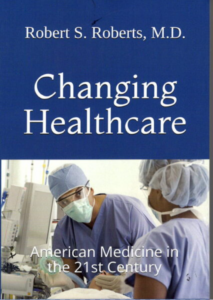
Medicaid spending is out of control. There are about 10 million more people on Medicaid than before the Covid pandemic. Annual federal and state spending on the program has grown by 60% to $963 billion – more than the U.S. now spends on national defense! How did this happen so rapidly? A little history lesson is needed here to understand what is happening.
For over a hundred years the Progressives in Congress have been pushing for a nationalized healthcare system, which means the government is in total control of healthcare. This is generally referred to as socialized medicine. It is currently in practice in other countries like Canada, the United Kingdom, and Sweden.
Republicans have resisted this in the United States for many years, correctly understanding that socialized medicine in all countries that have tried it leads to limited access to healthcare and denial of expensive treatments.
In 2010, under President Obama, the Democrats were successful in passing new healthcare legislation called The Affordable Care Act, (better known now as ObamaCare) without a single Republican vote. This legislation was a giant step toward total government control of healthcare, while not fully achieving their goal. It greatly expanded the eligibility for Medicaid by raising financial limits and incentivizing state governments to accept the change. Many blue states accepted this change, while most red states did not. This led to increased Medicaid enrollment.
During the Covid pandemic, a national emergency was declared by the Trump administration, which raised financial eligibility ceilings even further temporarily. This was never intended as a permanent change. Enter the Biden administration, which extended the declaration of a national emergency well beyond the Covid pandemic.

The Wall Street Journal editorial board calls this “The Great Biden Welfare Blowout.” They explain: “. . . Mr. Biden and the Democrats used the pandemic as an excuse to turn Medicaid into another entitlement for the middle class. Congress finally ended the pandemic expansions in spring 2023. Yet there are still about 10 million more people on Medicaid than before Covid. Annual federal and state spending on the program has grown by 60% to $963 billion—more than the U.S. now spends on national defense.”
One reason is the Biden Administration let Democratic states ease eligibility verifications and use federal Medicaid funds to pay for other social spending like homeless housing, food and mini-refrigerators. Biden officials also let states use accounting tricks to wring more Medicaid money out of Washington.
Consider California, where 37% of residents are covered by Medicaid. The state has extended Medicaid to undocumented immigrants and waived asset limits for beneficiaries. Mr. Newsom’s budget forecasts some $190 billion in Medicaid and other health spending this year, $119 billion of which will be picked up by the feds. The latter amount is greater than Florida’s annual budget.
Biden officials have also boosted food-stamp allotments and waived work requirements for able-bodied adults. A recent Wall Street Journal article reported the case of an unemployed worker who worried that accepting a job with a “smallish paycheck” would end his eligibility for food stamps and Medicaid. How many more are like him?
The WSJ editors say: “Republicans have floated stiffer work requirements for welfare programs and fixing the accounting gimmicks that states use to scam more federal Medicaid dollars. Good ideas. By our calculation, simply returning to pre-pandemic Medicaid spending levels, adjusted for inflation, could generate more than $1.4 trillion in savings over a decade. Progressives claim that Republicans want to take food and healthcare away from the poor and sick. But the reality is that Mr. Biden’s welfare expansions have mostly benefited those who can support themselves but for any number of reasons choose not to.”



